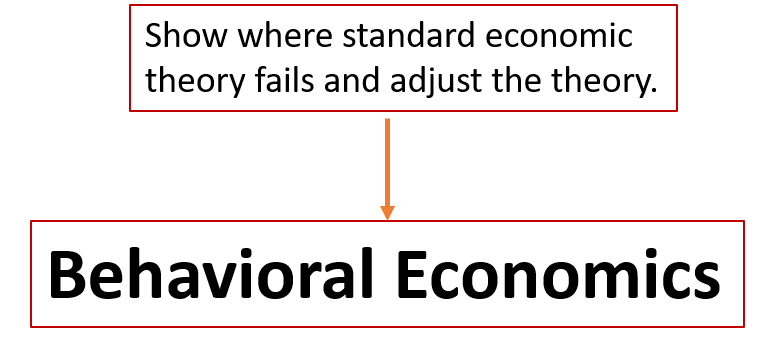Section 1 – The Irrational Quirks of Homo sapiens
In the Introduction, we alluded to the fact that behavioral economics as a separate field of inquiry serves three main purposes. First, it responds to the limitations of the neoclassical paradigm of Homo economicus, an idealized version of a human being who behaves eminently rationally: knowingly and selfishly, with unlimited computational capacity, never making systematic mistakes. Second, behavioral economics provides a clearer understanding of how Homo sapiens actually behave, given all of our irrational quirks—our miscalculations, misjudgments, inconsistencies, contradictions, illusions, moods, biases, fallacies, and so on (if that isn’t enough).[1] Third, the field of behavioral economics proposes adjustments to the theories historically predicated on the choice behaviors scripted for Homo economicus.[2]
Referring to the diagram presented in the This Book’s Approach section, Section 1 of the textbook pertains to the diagram’s upper portion.

Here, we demonstrate how standard economic theory fails by highlighting the major disconnects between behavior predicted of Homo economicus and that displayed by Homo sapiens (i.e., you, me, and your fellow students). We begin by evincing our proclivities for committing the miscalculations, misjudgments, etc. mentioned above through thought and laboratory experiments that you will participate in, as well as through brief discussions of outcomes from interesting laboratory and field experiments published in academic journals. Section 4 includes more in-depth discussions of some of the studies mentioned here.
Periodically, we will delve into the standard economic theory being tested by the laboratory experiments, and we will pinpoint how this theory has been revised in light of the outcomes of these experiments. This material is perhaps best described as the gist of behavioral economics. Unless otherwise indicated, the material in this section has either been taken directly from Kahneman (2011) or is based on discussions therein.
Media Attributions
- Figure 1 (Section 1) © Arthur Caplan is licensed under a CC BY (Attribution) license

